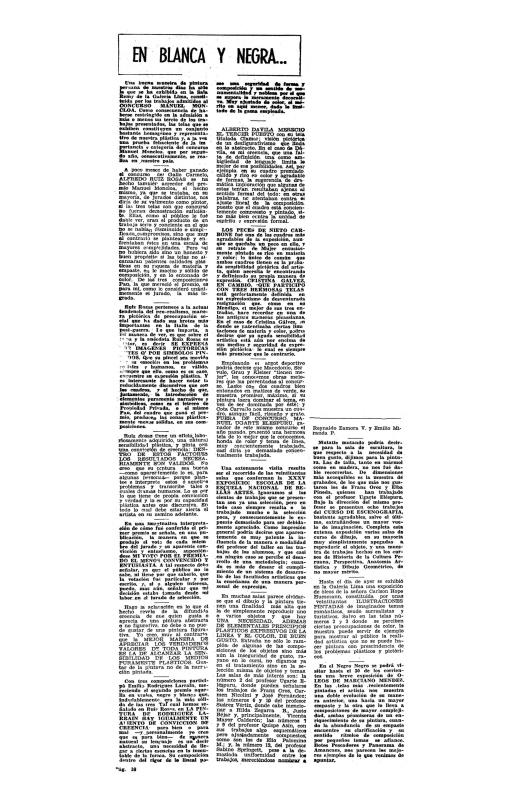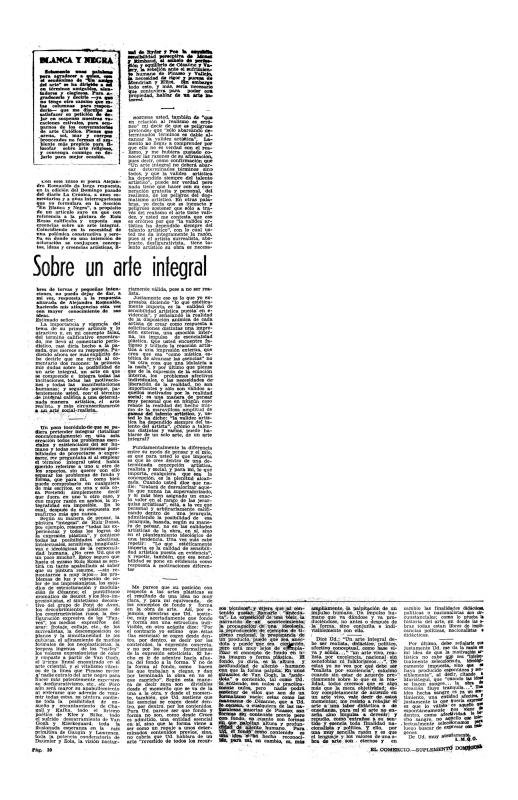Modernist architect Luis Miró Quesada Garland wrote this critique of the III Salón Moncloa (Lima, 1955), in which abstract artists were the majority of participants due to a deliberate abstention by figurative artists.
In 1955, painter Fernando de Szyszlo (n. 1925) won first prize at the III Salón de Pintura Manual Moncloa, which eventually became the most important [competition] within the Peruvian arts scene. Szyszlo had played a key role in the defense and dissemination of abstract art since his return to Lima (in 1951), both through his own work and his contentious zeal, which sparked debate [within the nation] (see the ICAA digital archive article “Dice Fernando Syszlo que no hay pintores en el Perú ni América: el joven pintor peruano declara sentir su pintura y la de los demás pero no puede explicarla” (no author) (doc. no. 1137793)]. The success of “non-figurative” art demonstrated its growing importance within the Lima arts scene, especially considering that the previous year’s prize had been awarded to Alfredo Ruiz Rosas (1926-2002), a painter of the social realism trend. This was another event that marked the era, and one that generated its own debate. [For more on this topic see the following: by Manuel Jesus Orbegozo, “Un ‘pan’ común, de todos los días, amasado por Alfredo Ruiz Rosas, ganó diez mil soles” (doc. no. 859785); by Luis Miró Quesada Garland , “En blanca y negra…” (doc. no. 859805), “En blanca y negra” (doc. no. 859826), “Sobre un arte integral” (doc. no. 1227195), and “Sobre un arte integral” (doc. no. 859917); by Alejandro Romualdo Valle, “Sobre un arte integral (respuesta al arquitecto Luis Miró Quesada G.) (doc. no. 1227139), “Sobre un arte integral: punto final” (doc. no. 1227176), as well as “Ruiz Rosas y un arte integral” (doc. no. 1227027)]. Although figurative artists had boycotted the III Salón Moncloa, the higher participation by abstract artists is evidence of the trend’s triumph among young artists, a fact later confirmed by the I Salón de Arte Abstracto in 1958.









